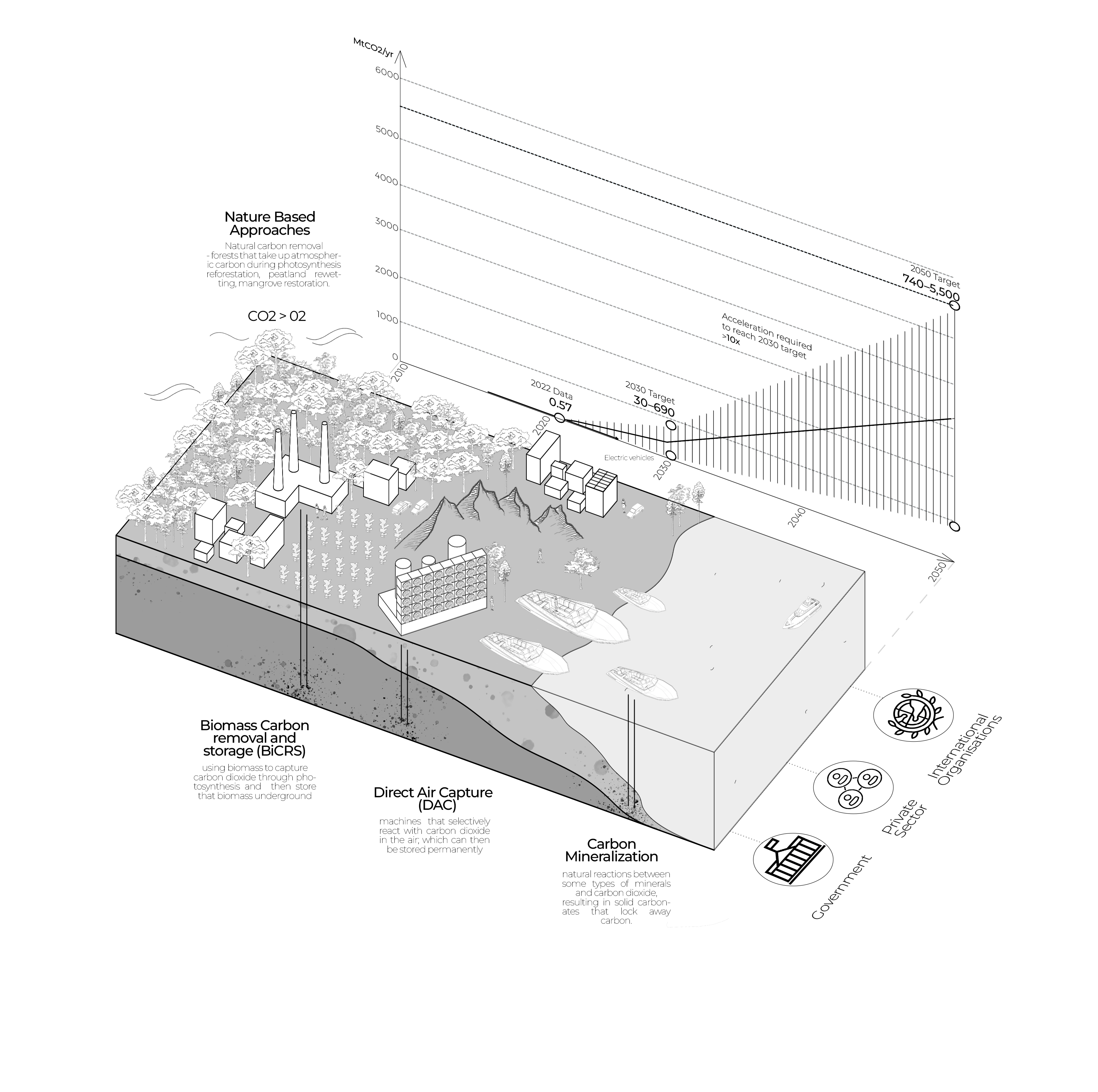As a complement to deep and rapid emission reductions, all pathways that limit global warming to 1.5°C also rely on carbon dioxide removal, including nature-based approaches and technological carbon removal methods. These approaches are needed to remove excess CO2 in the atmosphere to stay within the carbon budget available for limiting the temperature rise to 1.5°C.
The diagram generated is a representation of the different technological carbon removal techniques, while also showcasing the current carbon removal efforts in comparison to the prediction of the necessary removal by the years 2030 and 2050. Technological carbon removal includes a range of activities, such as Direct Air Capture (DAC), Carbon Mineralization, and Biomass Carbon Removal and Sequestration (BICRS).
Direct air capture (DAC): Direct air capture involves machines that use chemicals that selectively react with carbon dioxide in the air; the carbon dioxide can
then be stored permanently.
BiCRS approaches use biomass to capture carbon di-oxide through photosynthesis and then store that biomass underground. In some cases, the biomass is converted before it is sequestered using thermochemical or biochemical pathways.
Carbon mineralization is a set of approaches that accelerate the natural reactions between some types of minerals and carbon dioxide, resulting in solid carbonates that lock away carbon.
In terms of stakeholders, at the governmental scale, national governments can include requirements for community engagement and consideration of environmental and social impacts of carbon removal projects as prerequisites for project developers to receive federal funding.
Within the private sector, governance structures can be established to aid uptake. Private sector purchasers of carbon removal, and platforms that certify and sell carbon removal credits can include sustainability, community engagement, and other relevant stipulations for credits to be bought or sold as high-quality options.


